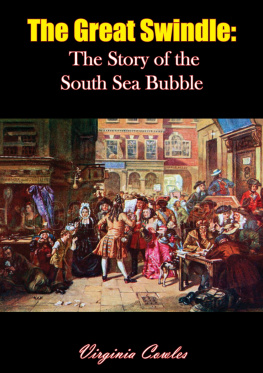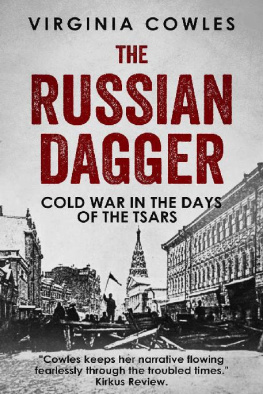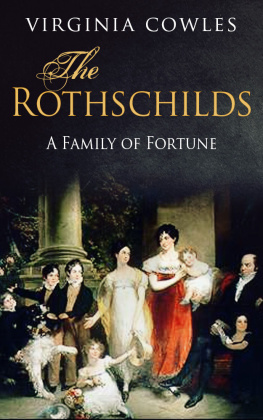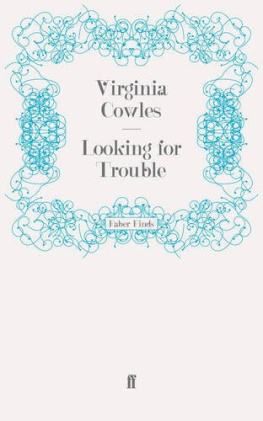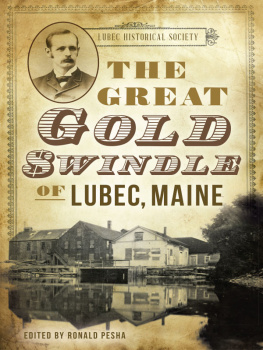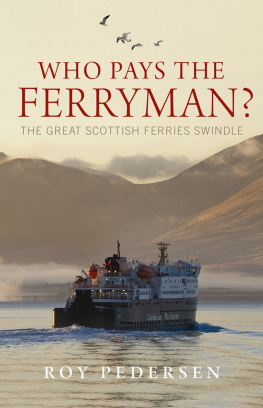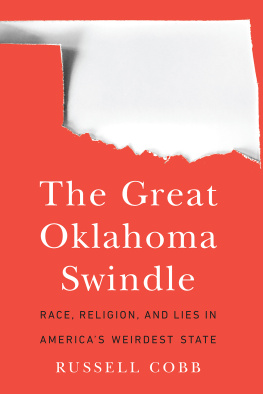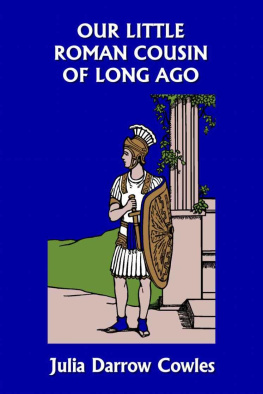Virginia Cowles - The Great Swindle
Here you can read online Virginia Cowles - The Great Swindle full text of the book (entire story) in english for free. Download pdf and epub, get meaning, cover and reviews about this ebook. year: 2016, publisher: Pickle Partners Publishing, genre: Non-fiction. Description of the work, (preface) as well as reviews are available. Best literature library LitArk.com created for fans of good reading and offers a wide selection of genres:
Romance novel
Science fiction
Adventure
Detective
Science
History
Home and family
Prose
Art
Politics
Computer
Non-fiction
Religion
Business
Children
Humor
Choose a favorite category and find really read worthwhile books. Enjoy immersion in the world of imagination, feel the emotions of the characters or learn something new for yourself, make an fascinating discovery.
- Book:The Great Swindle
- Author:
- Publisher:Pickle Partners Publishing
- Genre:
- Year:2016
- Rating:4 / 5
- Favourites:Add to favourites
- Your mark:
- 80
- 1
- 2
- 3
- 4
- 5
The Great Swindle: summary, description and annotation
We offer to read an annotation, description, summary or preface (depends on what the author of the book "The Great Swindle" wrote himself). If you haven't found the necessary information about the book — write in the comments, we will try to find it.
The Great Swindle — read online for free the complete book (whole text) full work
Below is the text of the book, divided by pages. System saving the place of the last page read, allows you to conveniently read the book "The Great Swindle" online for free, without having to search again every time where you left off. Put a bookmark, and you can go to the page where you finished reading at any time.
Font size:
Interval:
Bookmark:


This edition is published by PICKLE PARTNERS PUBLISHINGwww.pp-publishing.com
To join our mailing list for new titles or for issues with our bookspicklepublishing@gmail.com
Or on Facebook
Text originally published in 1960 under the same title.
Pickle Partners Publishing 2016, all rights reserved. No part of this publication may be reproduced, stored in a retrieval system or transmitted by any means, electrical, mechanical or otherwise without the written permission of the copyright holder.
Publishers Note
Although in most cases we have retained the Authors original spelling and grammar to authentically reproduce the work of the Author and the original intent of such material, some additional notes and clarifications have been added for the modern readers benefit.
We have also made every effort to include all maps and illustrations of the original edition the limitations of formatting do not allow of including larger maps, we will upload as many of these maps as possible.
THE GREAT SWINDLE:
THE STORY OF THE SOUTH SEA BUBBLE
BY
VIRGINIA COWLES
Contents
ROBERT HARLEY, 1 ST EARL OF OXFORD, 1714From a painting by Sir Godfrey Kneller, reproduced by permission of the Trustees of the National Portrait Gallery
GEORGE I, ABOUT 1714From a painting by Sir Godfrey Kneller, reproduced by gracious permission of Her Majesty the Queen
THE PRINCE OF WALES, 1716From a painting by Sir Godfrey Kneller, reproduced by gracious permission of Her Majesty the Queen
MADAME SCHULENBURG, DUCHESS OF KENDAL
BARONESS VON KIELMANSEGGEFrom a portrait by Sir Godfrey Kneller
PHILIPPE DUC DORLANS, REGENT OF FRANCEFrom a painting by Santerre, reproduced by the permission of the Muse de Versailles
JOHN LAW, FOUNDER OF THE MISSISSIPPI COMPANY, 1729From a portrait by Balthazar, reproduced by permission of the Muse de Versailles
SIR JOHN BLUNTFrom a painting by J. Simon, reproduced by permission of the Radio Times Hulton Picture Library
JAMES CRAGGS, THE ELDERFrom a portrait by John Closterman, reproduced by permission of the Trustees of the National Portrait Gallery
JAMES CRAGGS, THE YOUNGERFrom a portrait after Sir Godfrey Kneller, reproduced by permission of the Trustees of the National Portrait Gallery
EARL STANHOPEFrom a painting attributed to J. van Diest, reproduced by permission of the Trustees of the National Portrait Gallery
SIR ROBERT WALPOLEFrom a painting by John Wootton, reproduced by permission of the Marquess of Cholmondeley
WHEN the South Sea Company was formed in the year 1711, it was hailed by partisans as the Earl of Oxfords masterpiece. From the beginning it was no ordinary company. The Earl, better known as Mr. Robert Harley, called it into being as an adroit move in one of the most ruthless political battles in history. So let us open our story in 1709, with Mr. Harley, sword drawn, waiting to strike.
Queen Annes ministers were not having an easy time. In the autumn, Her Majestys Treasurer, Lord Godolphin, called on the directors of the Bank of England and asked for a loan of 600,000 to carry on the war against France. His request was granted; but before he left, the Governor of the Bank, Sir Gilbert Heath-cote, said:
Pray, my Lord, dont let us have a rotten peace.
Pray, tell me, what do you call a rotten peace?
I call anything a rotten peace unless we have Spain, for without it we can have no safety, and now we have them down, let us keep them so, till we get quite out of the war.
But, Sir Gilbert, I want you a little to consider the circumstances of the Duke of Marlborough and me; we are railed at every day for having a mind, as they call it, to perpetuate the war, and we are told we shall be worried next winter, for refusing a good peace, and insisting upon terms which it is impossible for France to perform.
They are a company of rotten rogues that tell you so, replied Sir Gilbert. Ill warrant you, well stand by you.
England had been at war for twenty years with only one, uneasy interlude of peace from 1697 to 1701. The superficial reasons for the war changed, but the fundamental cause was constant: to prevent Louis XIV from dominating the continent of Europe. The Whig party believed passionately that if any single power established a hegemony, Englands freedom would be in peril; her trade routes would be threatened and her prosperity endangered. The Tories took a different view. They were the aristocrats and squiresthe gentlemen of England they called themselves. They hated the war because the land-owners bore the brunt of the taxes while the Whig merchants prospered by lending out their money at high rates of interest. They wanted to lead their country lives in peace, and regarded foreign affairs as a nuisance. They were, in fact, isolationists.
Their voices were scarcely audible during the first years of the Queens reign. Anne was directed by a powerful triumvirate composed of the Duke and Duchess of Marlborough and Lord Godolphin. These three carried out the Whig war policy with rigid determination and remarkable efficiency. Sarah managed the Queen, Marlborough managed the war and Godolphin managed the Parliament. In order to make his task easier, however, Godolphin invited Mr. Robert Harley to join the Cabinet in 1702. Harley was a Tory but he had won a reputation as a moderate. He had a thorough knowledge of the House of Commons; he had spent years building up a network of contacts and making a study of the party machinery. He was a strangely unattractive figure. A dark, heavy man with sensual lips, he spoke with serpentine convulsions and found it difficult to express himself. Even when he managed to get the words out, it was not easy to understand what he meant. That lord, wrote Pope, talked of business in so confused a manner that you did not know what he was all about; and everything was in the epic way for he always began in the middle. This may have been due to drink, although as Macaulay pointed out, his practice of flustering himself daily with claret was hardly considered a fault by his contemporaries. Harleys character, like his language, was difficult to plumb. Macaulay contended that his dullness and diffuseness were his greatest assets. It is soothing to believe that what is splendid cannot be solid, that what is clear cannot be profound...From the absence of show in Harleys discourses many people inferred that there must be much substance; and he was pronounced to be a deep-read, deep-thinking gentleman, not a fine talker, but fitter to direct affairs of State than all the fine talkers in the world. This character he long supported with that cunning which is frequently found in company with ambitious and unquiet mediocrity. He constantly had, even with his best friends, an air of mystery and reserve which seemed to indicate that he knew some momentous secret, and that his mind was labouring with some vast design... Harleys design was neither vast nor noble, nevertheless it was real. Through the muddy waters flashed a diamond-hard determination to advance himself at any cost. His sources of information covered the whole country; he paid people to report to him; he understood every nuance of the party game. He was an expert operator.
For some time, he served Godolphin and the Marlboroughs faithfully. There was little else he could do. Marlborough, in conjunction with Prince Eugene of Savoy, led England and the Grand Alliance to a succession of victories. Blenheim and Ramillies covered Queen Annes reign with glory and lifted the nation to a pinnacle of fame. The Queen could not do enough for her beloved Mr. and Mrs. Freemanthe intimate names she had given to the Marlboroughs. Once when Sarah wrote a foolish letter about the Duke and herself resigning their offices, the Queen replied pathetically, If ever you should forsake me, I would have nothing more to do with the world, but make another abdication; for what is a crown when the support of it is gone. I will never forsake your dear self, Mr. Freeman, nor Mr. Montgomery [Lord Godolphin] but always be your constant faithful servant; and we four must never part, till death mows us down with his impartial hand.
Next pageFont size:
Interval:
Bookmark:
Similar books «The Great Swindle»
Look at similar books to The Great Swindle. We have selected literature similar in name and meaning in the hope of providing readers with more options to find new, interesting, not yet read works.
Discussion, reviews of the book The Great Swindle and just readers' own opinions. Leave your comments, write what you think about the work, its meaning or the main characters. Specify what exactly you liked and what you didn't like, and why you think so.

